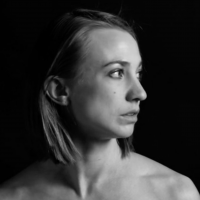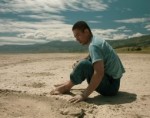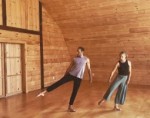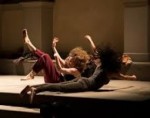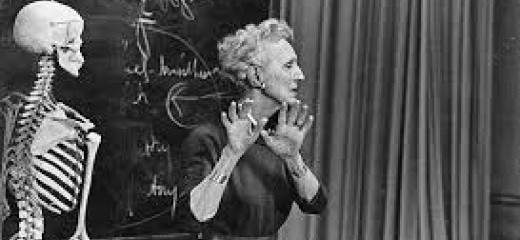
Moving Lessons: Relearning Our History as Dance Educators
by Eleanor Goudie-Averill
Janice Ross’ book Moving Lessons: Margaret H’Doubler and the Beginning of Dance in American Education (2020) lays the groundwork for how a physical education teacher, with little to no dance training, created the first academic dance program in America. This book is one window into the complicated embodiment of culture that lives on in the bodies of university trained dancers. “[I]n the mid-1940s, almost all the heads of dance… in the nation’s universities and colleges were H'Doubler former students.” In less than twenty years from when she started, H’Doubler succeeded in franchising dance education across America. With this in mind, it seems quite likely that most folks who have studied dance in academia in the last hundred years have been influenced by her teaching and ideas. Though she was not interested in theatrical performance, or the individualistic styles of the likes of Isadora Duncan or Martha Graham, she trained many dancers who would become professional theatrical performers and choreographers.
Post-modern dance pioneer Anna Halprin, who celebrates her 100th birthday this month and is another subject of Ross’ research, was a pupil of H'Doubler in the early 1940s. Halprin describes H’Doubler as her mentor in “A Reminiscence” that is included at the beginning of the book. In the introduction that follows, Ross states that “H'Doubler’s innovations reentered the world of theatrical dance via one of her most illustrious students, Anna Halprin. Reinterpreted by Halprin… H'Doubler’s antitheatrical bias and her focus on internal feeling became the basis for the 1960s revolution in dance.” In some ways, the work of these two women became the basis of the Judson movement and post-modernism in dance.
This book is a must-read for anyone invested in feminism and educational theory, though “for feminists today there is an irony in H'Doubler boldness in forging a new place for the dancing female in higher education while at the same time maintaining a strict and established code of appearances for that body in public.” In a chapter focusing on the educational ideas of John Dewey, whom H'Doubler studied with as a young woman on the cusp of her foray into dance, Ross deftly reveals ways in which the arts, and the embodied arts in particular, are integral to educational philosophies that are still in use today. She quotes Dewey: “Art is neither merely internal nor merely external; merely mental nor merely physical. Like every mode of action, it brings about changes in the world.”
Perhaps now, during the thick of necessary unrest around police brutality and racial inequity, it seems like the wrong time to champion a book that focuses on another white woman’s contribution to the field of dance education. However, H’Doubler was the pioneering force in creating a legitimate space for dance in academia, and established the first dance major and graduate program at the University of Wisconsin in 1926. She was not a revolutionary, but was a steadfast champion of dance as a subject in higher education in America. More educators now should be working diligently from within the system to update the curriculum of dance programs across the nation, as she did in her time. H’Doubler didn’t teach from a codified movement technique, and valued improvisation and discovery above all. Today, there are many set disciplines being taught in university programs, most of them rooted in Western concert dance, and it is well past time to diversify curriculum, and potentially return to more self-reflection, accessibility, and exploration. To quote H’Doubler: “The creative and imaginative mind builds new images out of meaningful experience… A dance is the rhythmic motor expression of feeling states aesthetically valued, whose movement symbols are consciously designed for… expression and communication- or for the delight in experiencing rhythm inherent in the many dance forms.”
Ross’ research is broad and thorough, and pulls together a rich and comprehensive view of turn of the 20th century ideology about education, performance, and public opinion about the perils versus virtues of dance. This second edition (which comes twenty years after the first release), includes further research on H'Doubler’s use of the skeleton — ever-present in the classroom throughout her career — which was a bold and seemingly morbid choice in 1917, as it was associated with “fetishism of dead bodies, and gender and body myths.” The book also provides ample cultural context concerning attitudes about women’s bodies at the end of the Victorian era, and ideas about what it meant to be a healthy citizen, physically and mentally.
H’Doubler set out on a quest for dance education that was “worthy of a college woman’s time” and ended up with her own pedagogy of exploratory improvisation. “H’Doubler was looking for… a form of dance that was as unencumbered as possible by personal style and fixed vocabularies… [S]he was able to give students… structured investigations in dance, so they came to understand themselves and their surroundings and to wonder about the world while making meanings through sensory information.”
Janice Ross, Moving Lessons: Margaret H’Doubler and the Beginning of Dance in American Education, Gainesville, Florida: University Press of Florida, 2020.
By Eleanor Goudie-Averill
July 4, 2020

